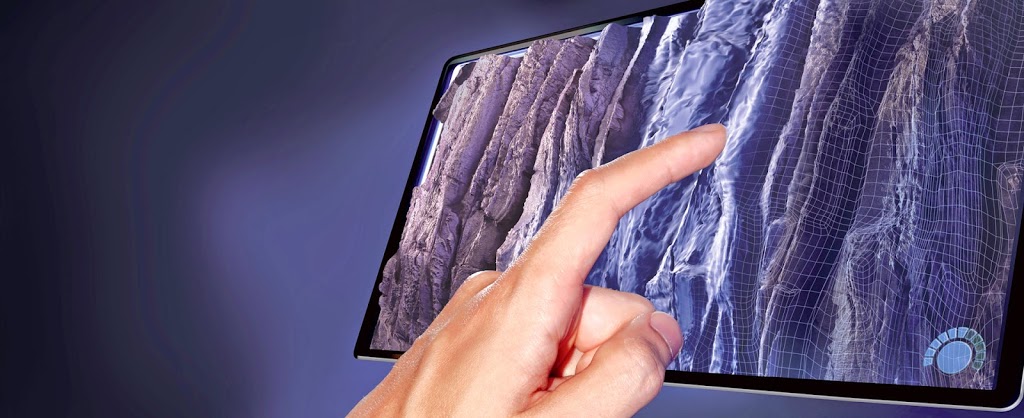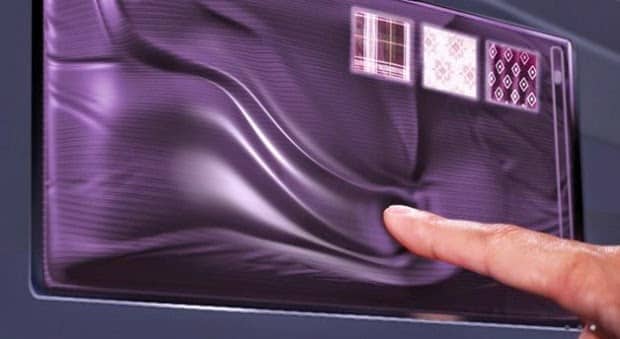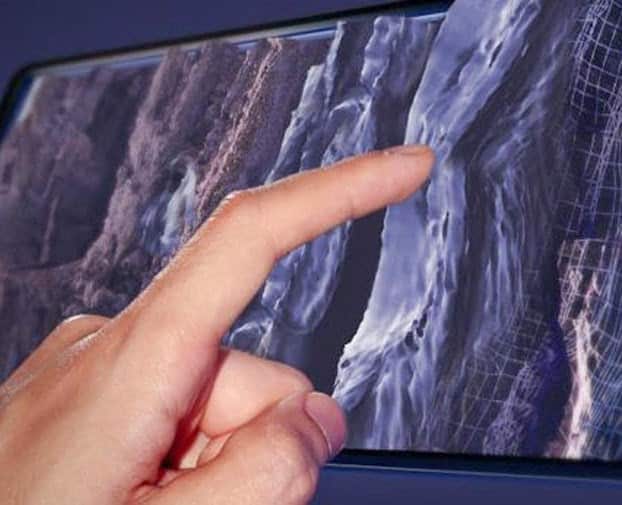Piezeoelectric materials produce mechanical stress in response to an applied voltage, or vice versa. They do this at great speed, which means piezoelectric actuators can respond quickly when a screen is being touched, says Steve Kingsley-Jones, Immersion’s director of product management. A prototype device featuring the technology was demoed two weeks ago at theMobile World Congress in Barcelona, Spain. When activated, a piezoelectric strip placed along one edge of a touch screen causes the screen to move from side to side, a slight movement that is felt by a finger touching the screen. A suspension system holds the screen in place, ensuring that the case does not move. Of course, Microsoft isn’t the only company working on new forms of haptic feedback. Disney Research launched their own technology named TeslaTouch back in 2010 that creates a broad range of tactile sensations on touchscreens. This kind of technology has the potential to revolutionize our sensory experience of the internet—and touchscreen games—by making virtual environments far more evocative and emotional. Imagine if shoppers could feel the fabric of a dress they found online, or reach out and pet a picture of a puppy. The potential is great for shoppers, educators, and general users alike. It will boom the tech market for sure


